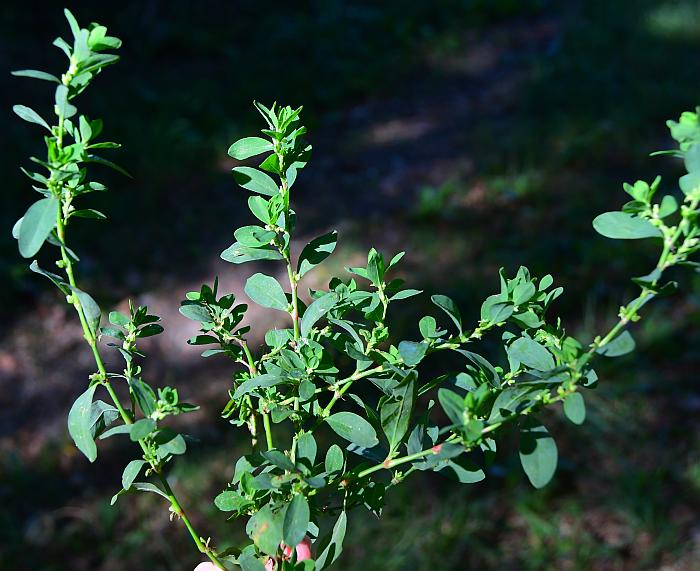Polygonum erectum L.
Erect Knotweed

Native
CC = 1
CW = 3
MOC = 41
© SRTurner
Polygonum erectum L.Erect Knotweed | |
 |
Native CC = 1 CW = 3 MOC = 41 |
© SRTurner |
|
Family - Polygonaceae Habit - Annual forb.
Stems - Loosely ascending to erect, to 45 cm, longitudinally nerved with a dozen or more lines, heterophyllous, light green. Ocreae pale and papery, often shredding or disappearing with age.
Leaves - Alternate, simple. Blades 4-60 mm long (those of main stems 18-60 mm, those of secondary branches 4-10 mm), mostly 2-4 times as long as wide, ovate to elliptic or obovate, yellowish green to bright green, the secondary venation obscure, the margins entire.
Inflorescences - Axillary, the flowers solitary or in small clusters.
Flowers - Perfect, short-stalked. Tepals 5, with 2 in an inner whorl and 3 in an outer whorl, 2.8-4.0 mm long, yellowish green, often with yellow margins, longer than the fused portion, usually incurved above the fruit, the outer 3 lobes longer than the 2 inner lobes and more or less enclosing them, boat-shaped to hooded at the tips, the inner 2 lobes shorter and flat.
Flowering - June - October. Habitat - Bottomland forests, streambanks, spring branches, pastures, lawns, farmyards, open disturbed areas. Origin - Native to the U.S. Lookalikes - Strong resemblance to P. aviculare and P. achoreum. Other info. - This species is not often seen, partly because it is inconspicuous and partly because it is relatively uncommon. It has been found in numerous widely scattered Missouri counties, and is similarly scattered across the upper Midwest and northeastern U.S. The plant is generally identified as a Polygonum by the ocreae on the stems and small axillary flowers which are often hooded. Identification to species is far more difficult, and taxonomy has shifted considerably as the understanding of family relationships has evolved over time. Characters which point to P. erectum include relatively wide leaves with blunt tips, perianth tubes less than half of the total length of the perianth, and inflorescences which are entirely axillary. Unfortunately, disagreements among botanists on the meaning of different character states persist. Photographs taken at Woodson K. Woods Conservation Area, Crawford County, MO, 9-17-2021 (SRTurner). |